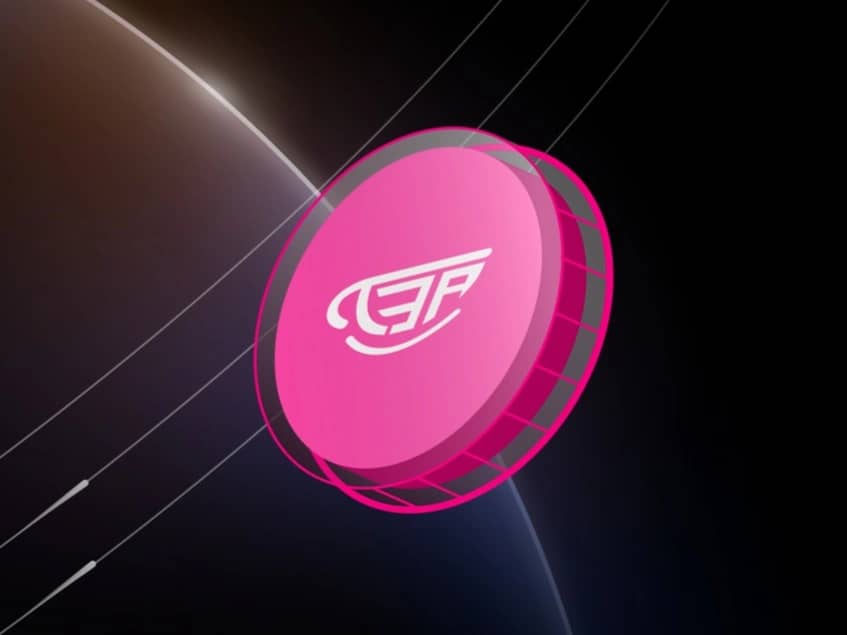订阅 wiki
Share wiki
Bookmark
Tea-Fi
Tea-Fi
Tea-Fi 是一个 去中心化金融 (DeFi) 平台,旨在提供一个用于管理和增长数字资产的集成环境。该平台旨在通过将通常在多个应用程序中才能找到的功能组合到一个界面中,来简化用户与 DeFi 的交互。 [1]
概述
Tea-Fi 的开发旨在解决 DeFi 领域内常见的复杂性,例如分散的工具和困难的用户体验。该项目声明的使命是通过创建一个统一的生态系统来降低 DeFi 的入门门槛,该生态系统将去中心化系统的灵活性与 中心化金融 (CeFi) 平台的用户友好性相结合。该平台提供跨多个区块链网络的资产管理、交易和收益生成工具。 [1]
该平台以自我托管的方式运行,这意味着用户可以控制其私钥和数字资产。它结合了旨在简化交易的功能,例如 Gas 费抽象层和跨链兑换功能。该项目还包括一个 AI 驱动的组件,以帮助用户识别投资机会。根据其官方社交媒体,Tea-Fi 得到了包括 Katana 和 Polygon 在内的实体的支持。 [2] [3]
历史和发展
Tea-Fi 的开发路线图概述了其功能和生态系统组件的分阶段推出。该项目在 2024 年第三季度的初始阶段包括社区销售、首次空投快照以及其原生代币 $TEA 的代币生成事件 (TGE)。2024 年第四季度计划推出该平台的 Beta 版本,其中包括 Easy-Gas v1、Super-Swap 等关键功能的引入,以及合规零知识 (ZK) 隐私的集成。 [1]
计划在 2025 年进一步开发以扩展平台的功能。今年上半年的里程碑包括引入多链钱包支持、跨链功能、合成资产、链上集成以及名为 Tea-Lend 的借贷协议的启动。2025 年下半年计划部署 MPC 钱包、AI 驱动的机会探索器、去中心化市场部门指数以及官方主网启动。 [1]
扩展到 2026 年的长期目标侧重于更广泛的互操作性和去中心化。这些计划包括在非 EVM 网络上的部署、社区驱动的指数的引入以及 The TeaDAO 的建立,以促进社区治理。该项目指出,其路线图时间表和功能可能会发生变化。 [1]
技术和功能
Tea-Fi 集成了多种技术来创建其一体化平台。关键功能旨在简化交易、增强交易能力并确保用户控制资产。
Easy-Gas
Easy-Gas 功能是一个交易费用抽象层,它消除了用户持有区块链原生代币来支付 Gas 费的要求。相反,用户可以使用稳定币(如 USDT、USDC 和 DAI)或平台的原生 $TEA 代币和合成资产来支付交易费用。这旨在创建与不同区块链网络交互时更流畅的用户体验。 [1]
Super Swap
Super Swap 是该平台的跨链资产交易解决方案。它允许用户直接在 Tea-Fi 界面中跨不同区块链交易代币,而无需第三方桥或用于不同网络的多个钱包。该功能被设计为一键式解决方案,以促进原本断开连接的区块链生态系统之间的互操作性。 [1]
AI Copilot
该平台包括一个 AI Copilot,这是一个使用人工智能来分析 DeFi 市场并识别潜在的收益生成策略和投资机会的工具。此功能旨在通过为投资组合增长提供数据驱动的见解来帮助用户驾驭 DeFi 的复杂性。 [2]
安全和隐私
Tea-Fi 是一个自我托管平台,可确保用户保留对其数字资产和私钥的完全控制权。为了保护隐私,该平台具有一个嵌入式层,该层利用零知识 (ZK) 加密技术。这允许用户在保持安全性和合规性的同时进行私人交易和兑换。该平台的 智能合约 已经过第三方安全公司的审计。 [1] [2]
高级交易工具
为了提供更复杂的交易选项,Tea-Fi 集成了来自 Orbs 的协议,包括 dLIMIT 和 dTWAP。
- dLIMIT 允许用户设置去中心化限价单,该限价单在达到指定价格时自动执行。
- dTWAP 允许用户执行时间加权平均价格订单,将大型交易分解为较小的、算法执行的交易,以减少市场影响。 这些工具提供与去中心化框架内的中心化交易所相当的执行能力。 [1]
收益生成机会
该平台通过其 Yield Engine 为用户提供了多种途径来生成其数字资产的收益。
- 动态质押: 用户可以在多个区块链上质押资产以赚取奖励。
- 收益聚合: 该平台提供对多链、产生收益的合成资产 (tAssets) 的访问,以帮助实现投资组合多元化。
- 加密货币指数: 用户可以投资于跟踪特定市场部门或遵循其他交易者策略的透明指数。
- 借贷: 该平台促进借贷,允许用户赚取无抵押贷款的利息或借入资产。 这些功能被聚合在一起,以为用户提供基于其偏好的定制机会。 [2]
代币经济学
Tea-Fi 生态系统由其原生实用代币 $TEA 提供支持。该代币是几个平台功能的组成部分,主要是质押和奖励。
$TEA 代币质押
用户可以质押其 $TEA 代币以赚取奖励。质押机制采用动态奖励系统设计,随着时间的推移,回报率可能会增加。该模型包括忠诚度激励措施,以鼓励长期参与并为生态系统的稳定性做出贡献。 [1]
合成资产质押
除了质押原生代币外,用户还可以质押合成资产,称为 tAssets。这些是其他加密货币的代币化表示。通过质押 tAssets,用户可以赚取以 $TEA 支付的奖励。该系统还包含随着时间推移而增加的基于忠诚度的奖励结构,从而为平台内的收益生成提供了另一种机制。 [1]
合作伙伴关系
Tea-Fi 已与区块链行业的各个组织建立了合作伙伴关系。该项目得到了 Katana 和 Polygon 的支持。其合作者名单包括 DAO Maker、Orbs 和 Chainalysis 等。这些合作伙伴关系支持平台的各个方面,从区块链基础设施和交易技术到安全性和合规性。 [2] [3]
平台指标
截至 2025 年初,Tea-Fi 平台报告了以下用户和交易量指标:
- 历史用户: 超过 700,000
- 总锁定价值 (TVL): 超过 460 万美元
- 社区成员: 超过 110 万
- 总交易量: 超过 5.4 亿美元 这些数字代表了自平台成立以来平台的累计活动和用户参与度。 [2]
发现错误了吗?
